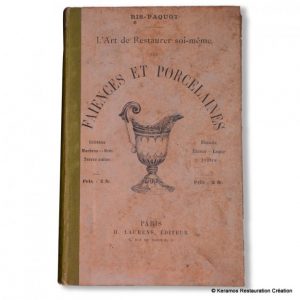The ceramic restoration is still an unknown sector of artistic craftsmanship, but in constant evolution. This discipline has been developing for many years, as much in terms of quality as in terms of quantity, and is adapting to the research in applied arts history and science.
There is a distinction between museum restorers and the independent ones. The first one follows strict rules learned at school, and the second trains on the field, generally in a workshop. But, the trend toward minimalist restoration concerns both and adopts the deontology of conservation.

Polychrome dish, Saintonge, milieu du XV° s. CC BY SA
Conservation
Museum restorers have to conserve very old, sometimes archeological pieces, which have witnessed centuries of art.
Using cutting-edge technology, they stop any damage that might occur in the future. Also, the aim is not to erase all marks of past time. The object is mainly considered in a historical and scientific way.

Verseuse zoomorphe, Moustiers
Minimalist or illusionnist restoration
The artistic craftsman proposes to his private client to give back the initial aspect of the pieces, by always respecting the authenticity.
Different degrees of restoration may be chosen, according to the state and the value of the piece. From simple conservation to illusionist restoration, we can propose you several intermediate levels.


We are far from the “raccomodeurs de faïence” who were still working in the 50s !
Those craftsmen, who restored everyday objects, belonged to the corporation of old street trades, such as knife grinders or chair-bottomers.
This illustration from « L’art de restaurer soi-même faïences et porcelaines », by Ris-Paquot, shows ancient techniques.
Nowadays, the discipline has become a real artistic craftsmanship, and concerns any type of ceramics, whether valuable or not.